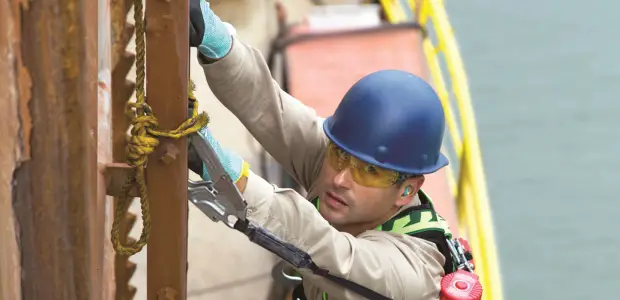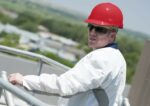When you are working in constrained spaces where head protection is a must, yet there are no chances of getting hit by falling or flying object, but instead you can hit your head yourself against overhead hanging objects or low-ceilings, that is when you have to choose a bump cap instead of a hard hat.
Bump caps are not even approved by OSHA and therefore, there are no set rules whether you can wear your bump caps backwards or not. It entirely depends on your comfort and the demand of the job you are in to, whether it is feasible to wear the bump caps backwards.
Instances where the brim of the cap is obstructing your vision, or there is no requirement of the light at the anterior of the bump cap, you can definitely wear them backwards.

Let’s learn a bit more about bump caps so that we get a clear view of its usage…
Reasons to wear bump cap backwards:
Let us first get a clear picture of what a bump cap is…
A bump cap looks very similar to a basic ball cap, with a slight difference of having built around a padded plastic shell that provides for impact resistance.
A bump cap is definitely considered as a safety PPE where there are chances of worker generated impacts.
There are no standards to follow while wearing of bump caps and so you can wear it front-facing or backwards according to your convenience.
Reasons why you might require to wear your bump cap backwards would include:
1.) If the brim of the bump cap is obstructing your vision
2.) If the brim of the bump cap is blocking source of light on your workpiece
3.) If there is no need of the light that might be set in your bump cap (as is generally needed in digging tunnels or excavating caves)
4.) If there is no danger of falling objects on your face
5.) If that makes you more comfortable while working
See also: Can You Wear a Hard Hat Backwards?
OSHA rules and regulation regarding bump caps:
Actually, there is no specific rules and regulations as to the wearing of bump caps by OSHA. The only standard that exists regarding a bump cap is the European Standard, EN 812:2012.
In fact, according to OSHA:
“Bump caps are not designed to protect against falling objects and are not ANSI-approved.”
Pros and cons of wearing bump caps backwards:
Everything is designed to be worn just the way they are and doing alterations in the wearing statement would mean that you are compromising on its features especially if its something worn for your personal protection.
Likewise, wearing a bump cap the right way (that is forward) and backwards also has its own advantages and disadvantages which I am going to discuss below.
Pros of wearing bump caps backwards:
√ Wearing a face shield with safety glasses, mask and front-facing bump cap might be not be a very comfortable combination as it would disrupt ventilation, fog your glasses and make your forehead sweat. So, in this situation, wearing a bump cap backwards is a good idea
√ It will give you a clearer view of your workspace and objects
√ It will just help your face to receive more fresh air while you are working
√ Sometimes it’s just a more comfortable way
Cons of wearing bump caps backwards:
⊗ Wearing bump cap backward would just compromise on the level of protection that the cap was designed for offering
⊗ If your bump cap has a pad on the forehead (or a sweatband), wearing it backwards will not help the purpose
⊗ If your bump cap has a chinstrap to secure it to your face, wearing it backwards won’t enable you to secure the strap
In which occupation can you wear bump caps backwards?
Bump caps are required to be worn in jobs where there are chances of worker generated impacts that is the where the wearer can bump his head against confined spaces like low ceilings and there shall be no chance of any object-generated impact.
Occupation where you can wear a bump cap backwards are:
-
-
- Workers working under sinks
- Workers working under low ceilings like tight quarters
- Workers working in crawl spaces
- Workers working under hanging objects
- Mechanics
- Food processing
- In-home services
- Airline
- Manufacturing and assembly
-
Can you wear a bump cap instead of a hard hat?
As is mentioned earlier, a bump cap is used to protect against wearer-initiated motion where there are chances of hitting self’s head against low overhead objects.
A hard hat on the other hand is a much more obtrusive option than bump cap where there are chances of serious hazards from hanging, falling and flying high-impact objects.
A bump cap is not even approved by OSHA or ANSI, whereas, a hard hat is a mandatory for workers in open spaces such as construction industry.
A worker generated impact is always low in intensity than a moving object generated impact and therefore a bump can never be replaced with a hard hat and cannot be worn in places where there is a requirement of hard hat.
And it’s a wrap!
Everything is designed to be worn the way it is made and only then it comes to its full utility. A bump cap is also no exception to this!
So, I suggest to wear your bump cap forward for maximum protection because you never know the intensity of impending hazard!







